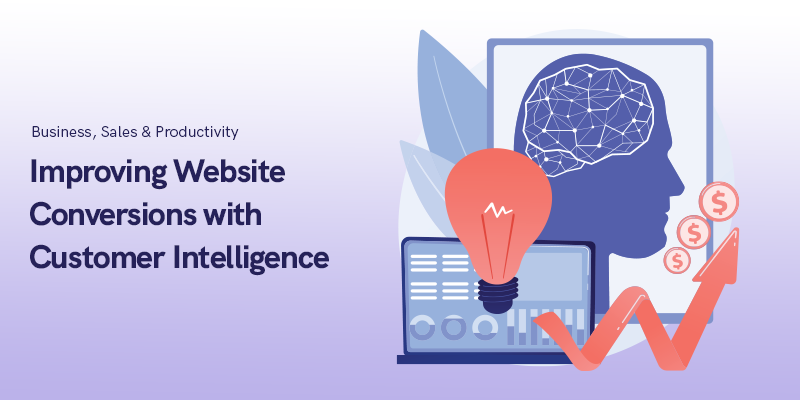
Improving Website Conversions with Customer Intelligence
Designing a website for better conversions is a difficult task. You need to keep in mind what customers would be looking for when opening your website, and try to make information as accessible as possible.
You should also maintain a good user interface so customers would not be confused with the pile of information presented to them.
So user experience is important here.
E-commerce trends in 2024 seem to indicate the importance of using customer data to stay competitive, making customer intelligence an invaluable tool for web designers and marketers.
Using a customer data platform such as Hightouch is a fantastic way of organizing these profiles effectively.
And to make matters even more complicated, you want to incorporate elements that produce trust and make doubtful customers quit switching between your website and your competitors' websites.
Now instead of relying on guess work, designers can use actual customer data in their designing process.
Customer intelligence is the act of gathering data from customers and analyzing it to gain useful insights into customer preferences and pain points.
Let’s find out more about the types of data that can be used to improve website conversions, and how they could be used properly.
Types of Customer Data that Companies Track for Websites
Companies track many customer data-points to enhance user experience and improve website conversions.
While some data can be gathered through internal documents, databases, and CRM systems, businesses also use data collection tools to supplement this information.
Behavioral Intelligence
Businesses use this data to understand customer habits and perform trend analysis. You can also use it to gauge customer engagement.
For online businesses, this means tracking metrics such as number of pages viewed, amount of time spent on the website, click-through rate, lead magnet download count, etc.
Furthermore, you also need to record from where a customer has landed on your website.
This provides insights into the effectiveness of your marketing campaigns and enables you to manage your resources. This can be done by monitoring referral URLs.
Customer Demographic Intelligence
Users often leave a webpage within 15 seconds if the content is not engaging enough.
That’s why this information is very useful for creating and tailoring resonant content for different customer profiles.
Businesses use specific data points such as age, geographical location, marital status, occupation, etc, to thoroughly understand their customers and create better personas.
Transactional Intelligence
Transactional intelligence is information collected by websites specifically related to transactions.
Businesses can use this information to identify their most popular products, enhance product development, and create upselling and cross-selling opportunities.
Key metrics include purchase history, order frequency, average order value, product preferences, etc. Sometimes, businesses also include data points such as items kept in a cart and discounts used to create a more comprehensive context.
Type of Device Used
Since devices vary in size, resolution, and capabilities, it’s important to collect this information to ensure a seamless and responsive UX across different devices.
This can also help you identify different browsing patterns, i.e., how customer journeys differ on various devices.
This is especially useful for mobile website experiences since mobile accounts for approximately half of the web traffic worldwide.
Data points collected here are device type (desktop, mobile, tablet), type of operating system, browser used, and screen resolution.
Psychographic Data
This data is useful for understanding the underlying interests, personas, and personality traits of your customers.
This information can help you create personalized experiences and align your brand’s image with the values and beliefs of your target audience.
This information can be collected through surveys, reviews, feedback forms, and social media comments.
How Customer Data Is Used for CRO
Creating customer segments
Using customer intelligence allows you to create customer segments and divide your customers based on different demographics and behaviors.
This enables you to tailor your website’s UI and content for different customer profiles.
This also helps you customize your marketing communication for different groups and channels.
This is called segment-specific promotions, and 80% of the organizations that used segmentation reported increased sales.
UI/UX Optimization
Customer intelligence can be used to significantly improve your UI and make it more engaging and user-centric.
For example, exit-intent popups can be used to ask users to stay if they are leaving the website. This reduces the bounce rate and improves conversions.
Furthermore, you can use this information to identify and diagnose common challenges (pages not loading correctly, pages loading slowly, etc.) that your customers face when using your website. This enables you to improve your website’s UX design.
Lastly, this data enables you to pinpoint which pages are not converting and specifically target them for optimization.
Decision trees can help you streamline user choices and preferences in a simple map. Using this map, you can provide the best options for each step of your customer journey.
Personalized Messaging
Businesses can use customer intelligence collected via cookies and website signups to personalize content for different users.
This also enables them to run targeted ads for product promotions.
This significantly affects website conversion since as per this website, 49% of customers bought a product after receiving a personalized offer. What’s more, 80% of consumers are more likely to do business with a company if they provide personalized experiences.
Websites can also use this information to identify behavior triggers and use them to initiate behavior-driven messaging.
Such behavior-based marketing will ensure that the content displayed aligns with the specific interests and needs of the consumers.
Funnel Analysis
Customer demographic and transactional intelligence are highly useful for analyzing your sales funnel and identifying its issues.
Heatmaps enable you to track your customer’s journey and pinpoint the exact user drop-off point.
This enables businesses to take targeted corrective actions to improve conversions.
You can also run retargeted messaging on your website to recover lost sales. Furthermore, you can experiment with different pricing models and discount bundles to assess your conversions.
Running A/B Tests
Using customer intelligence, businesses can identify specific elements of their websites for targeted A/B testing. This also enables them to select examples based on user characteristics and behavior.
This can be extremely helpful in segmenting customer profiles and optimizing conversion paths according to different user journeys.
You can also use this information for testing behavioral triggers, refining messaging, and creating an adaptive user experience.
A/B tests are very common in the industry, and many businesses worldwide use them for optimizing their website. For example, WallMonkeys got a 550% increase by testing their homepage through A/B tests.
Understanding Cart Abandonment
Cart abandonment rate is 79.53% across multiple sectors. And 18% of the users abandon carts when the checkout process is too long or complicated. That’s why understanding cart abandonment issues is very important for businesses since it directly affects their bottom line.
Companies can use customer intelligence to determine user concerns and friction points in the checkout process. You can also dynamically change your content to reduce cart abandonment.
This is done by identifying cart abandonment triggers and using remarketing strategies to re-engage customers.
Finally
Creating an action-plan for conversion rate optimization is an area that demands a lot of concrete data and information about your customers.
There are different kinds of customer data you can gather such as demographic and psychographic data, transactional intelligence, devices used, and behavioral data.
You can use this data to create customer segments, optimize website UI/UX, personalize messaging, analyze funnels, run A/B tests, or reduce cart-abandonment.
Recommended Posts

How to Create an Effective Event Marketing Plan from Scratch in 2025
December 22, 2025




